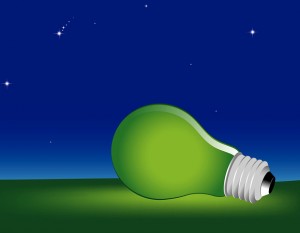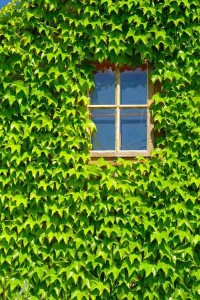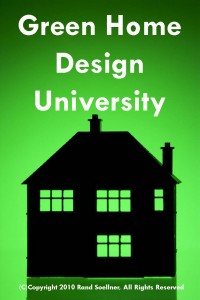Energy efficiency is paramount to home architects.
(C)Copyright 2009 Merry Soellner, All Rights Reserved Worldwide. Permission is hereby granted for all parties to copy this press release in its entirety for infor mational purposes. www.HomeArchitects.com
mational purposes. www.HomeArchitects.com
Energy efficiency in residential design is a matter of course for the home architects at the Rand Soellner Architect company. Green home architects is a good description of this architectural firm. So is custom home architects. Soellner has been designing fine homes for his clientele for decades.
Soellner was the architect who selected the site for the New Florida Solar Energy Center, programmed it, master planned it and conceptually designed it. There is some serious horsepower here when it comes to knowing about energy efficiency and how to conserve energy in any kind of building, much less a house.
But Soellner knows that energy consumption in houses is greater than all the commercial buildings put together. That is one of the reasons he is on a mission to have energy efficiency built into each of his residential designs. He actually has his own high-efficiency/ low energy consumption specifications that identifies and selects, for the homeowner’s approval, the best choices available today for reducing the amount of power and fuel and energy required to operate a house comfortably. Part of this energy efficiency comes from the United States Department of Energy / Environmental Protection Agency, from their Energy Star program. Rand Soellner Architect is an Energy Star Partner. This is rare for home architects, because the Energy Star program requires that architects also practice commercial design, which Soellner does.

Energy efficiency and embodied energy.
Soellner knows that energy efficiency begins with the embodied energy that is contained in a material. This is a sustainable architecture term that means the amount of energy required to make something.
For instance, aluminum has a very high degree of embodied energy because it is an arduous process to mine it, transport it, then purify it, melt it and shape it into raw usable sheets or ingots, then to transport and then rehshape it or spend additional energy remelting it to mold into other shapes for specifc uses. There is also energy expended to transport aluminum around the country and around the world.
Wooden timbers or logs used in construction, on the other hand require very little embodied energy. Energy efficiency is high because embodied energy is low. This is because all that needs to be done is cut the tree (which you then replant), remove the branches (usually this takes just seconds in the field with a special harvesting machine), then cut it to particular lengths in the field (once again done in seconds by that same machine), then stacked (also by that same machine in seconds), then transported to a nearby saw mill. At the saw mill, the log is either left alone, as is, or cut in a large table saw by semi-automated machinery to create rectangular shapes, if desired. That is about it, except for shipping to either wholesale or retail lumber yards. Kiln drying can add embodied energy to wooden studs, but this rarely occurs with the larger timbers. Therefore, large wooden timber construction uses much less embodied energy. There is less energy required to create the material with which you build. Knowing that, if this is a material you want to use, you have a beginning of energy efficiency in the very materials of your construction. Most people probably don’t think about embodied energy, but this is something architects are learning, to build in a lower overall carbon footprint into the houses people build and in which they live.

Mainstream energy efficiency topics
Okay, on to the aspects most people might think about when discussing mainstream energy efficiency: insulation, windows and doors and other treatments. Insulation is something that many people think that the more you have, the better off you are. And this is true, but it is a relative thing. How so? Because different insulating materials have different insulative resistance properties. Fiberglass insulation (the fuzzy pink stuff that looks like cotton candy in the walls and attics of most houses in the USA) is the most popular, because it typically has the least expensive capital (or up-front) cost. Energy efficiency and least initial cost go hand-in-hand with this choice. While this does represent a good value, there are aspects about fiberglass that are not so good, if not addressed properly. For instance, you need to ventilate it in attic locations and this can bring with it unwanted infiltration into your living space from above. There are techniques regarding infiltration and vapor barriers, but this represents a whole other set of variables and is the subject for another discussion. Also, there are cracks and crevices that fiberglass cannot seal as effectively as some other types of insulation.
Insulation choices that impact energy efficiency in a house
There are other choices for insulation, however, that are better for energy efficiency. For instance, polyurethane foamed in place is probably the most efficient (highest “R” value per inch of thickness) insulator available. It is also several times more expensive than fiberglass’ initial cost. This is where things start getting tricky. We now mention “Life Cycle Cost”. This has to do with the overall cost of a given material or system choice and its cost of operation and maintenance over a given timespan, for instance over 10 years, or 20 or 30. It is an absolute fact that foamed -in-place polyurethane insulation will save you hundreds, if not thousands of dollars and more over the span of a decade or 2 or 3. Many people desiring higher energy efficiency have made the choice to spend more up-front for this superior insulation in order to reap the rewards of lower power bills over the life of their home. Rand Soellner Architect cannot fault this logic. It is a very good decision, and one he advocates, if energy efficiency is the only goal.
Debt Service and Energy Efficiency.
There are other people, however, who say that they do not want to pay the additional amount of dollars that will be required for their monthly mortgage debt service to pay for that superior insulation. Energy efficiency is one thing, what they have to pay the bank every month is another. Some people might wish to invest some extra cash into their construction to pay for this better insulation so they will not have to pay the additional monthly mortgage charge for this. Other people might run some comparisons and feel that their lower monthly power bills for heating and air-conditioning will offset the added debt service and therefore feel this is a prudent investment. There is also the hoped-for added value that this superior insulation may bring when the home is sold to others some day. Perhaps the original owner (and future owners and sellers) will enjoy a higher sale income from this higher quality insulation. So, there is a trade-off. More investment when you build, for a lower monthly electrical bill forever, and hopefully higher resale price. Only the homeowner can make these choices for greater energy efficiency versus costs up front or later.
For doors and windows, there are also many choices that impact your energy efficiency. Soellner suggests using, at a minimum double-pane (insulated) glass regardless of your climate. Soellner can think of nowhere on the planet that could not benefit from having at least double panes. The reason is that the exterior heat or cold is held apart from your interior air. There is a space between the inboard and outboard panes of glass. This space is either ambient air, or a special gas like argon. The thing to be careful of with specialty gases is that this requires a totally sealed glazed sash and unfortunately at higher altitudes, this can result in ruptured seals due to pressure differentials from the point of manufacture to installation site, and this can then result in fogged panes inside the sandwich panel of glass. Soellner has methods of specifying his insulated glass that avoid this situation, as much of his projects are in mountainous regions at higher altitudes, requiring some special considerations. Some extremely cold places, like Canada and Alaska warrant triple glazing, meaning that there are 3 panes of glass for the windows, which is an even better way to insulate your windows than double. Of course, this costs more. Doors with large panes of glass in them are essential like large windows, so many of the considerations are similar. You may be starting to see that energy efficiency is a comparison of costs now or costs later and of comfort.
Summary
Energy efficiency in home designs is very involved and requires a design professional like a residential Architect to properly analyze all of the alternatives and present them in a manner that allows the homeowner to make informed choices. Energy efficiency in the final analysis requires architects to design using the best options available, while allowing his or her client to make the final choices that work for them. This requires designing in a flexible manner that permits client choices where their budgets are concerned.
tags: energy efficiency, Cashiers, Highlands architect, energy star, timber frame, green, Hendersonville, Asheville, Brevard, Lake Tahoe, post and beam, rustic, open plan, atlanta, log mansions, cottage, stone, resort, vacation house, boone, waynesville, maggie valley, murphy
——————————————————————-
Contact for energy efficiency:
Rand Soellner Architect
Rand Soellner AIA/NCARB
Website: www.HomeArchitects.com
E-mail: Rand@HomeArchitects.com
Phone: 828-269-9046
———————————-
GREEN HOME DESIGN UNIVERSITY QUESTIONS, for those of you taking Rand Soellner Architect’s course of green instruction: about the above subject:
1. Energy consumption in houses is __________ commercial buildings?
a. about the same as that in
b. greater than all
c. much less than
d. okay, but so are
2. Embodied energy means:
a. SIPs.
b. The amount of energy required to produce a material.
c. The PAR-level of adequacy.
d. Amount of energy in your body.
3. Which of the following window operation types is the most air-tight when closed?
a. Casement.
b. Double hung.
c. Horizontal sliding.
If you are continuing in your Green Home Design University course to the next level,
Favorite this page now, by clicking on your “Favorites” menu choice in the upper left of your Windows Internet Explorer window,
then click here: Natural Materials Architecture to go to the next level 7.
———————————-
answers:
1. b., 2. b., 3. a.


1 Comment
uberVU - social comments
6:00 am - February 26, 2010Social comments and analytics for this post…
This post was mentioned on Twitter by RandSoellnerArc: Green Home Architects GREENTIPS 12-31-2009 Here is one of our Energy Efficiency articles: https://www.homearchitects.com/energy-efficiency…